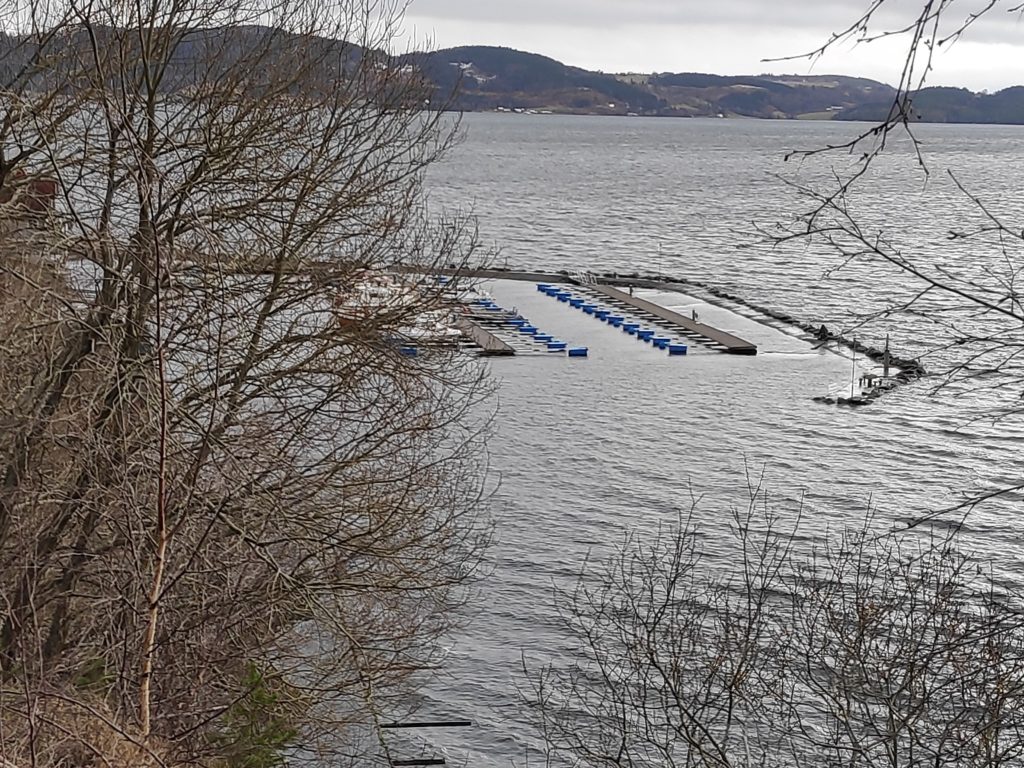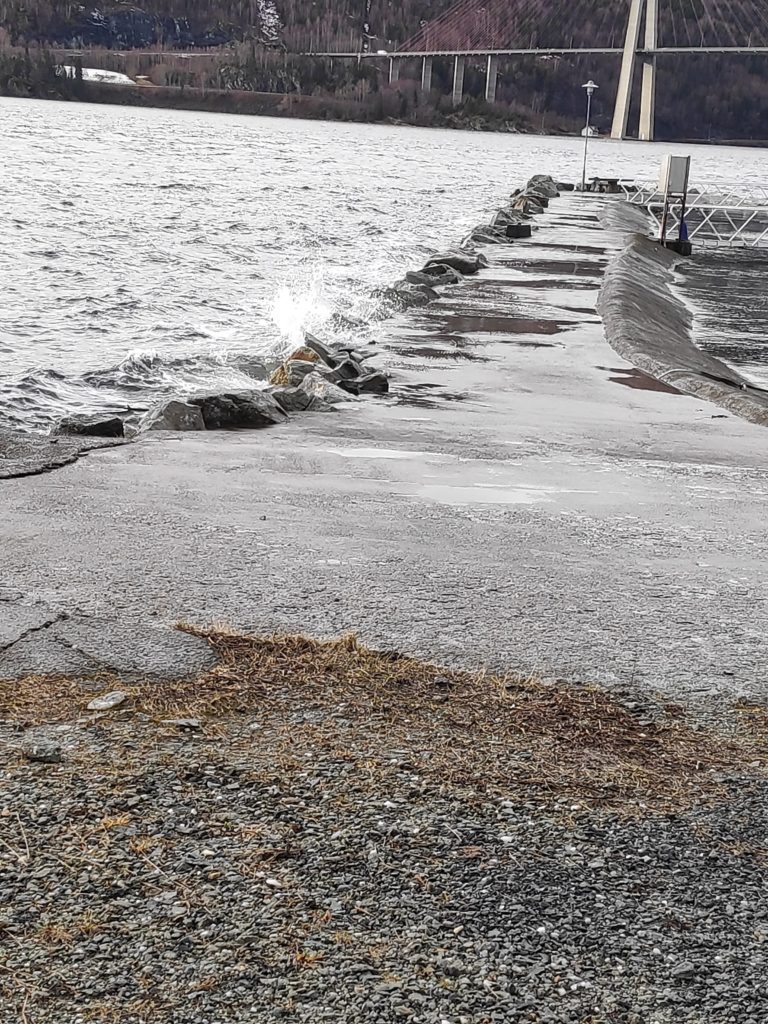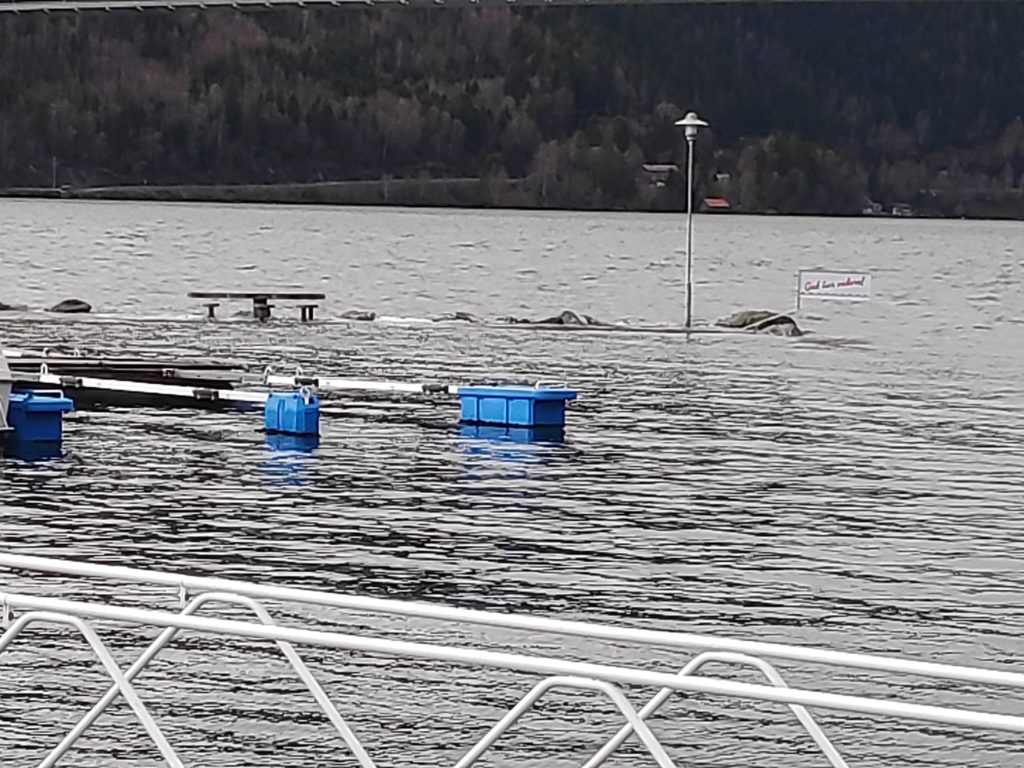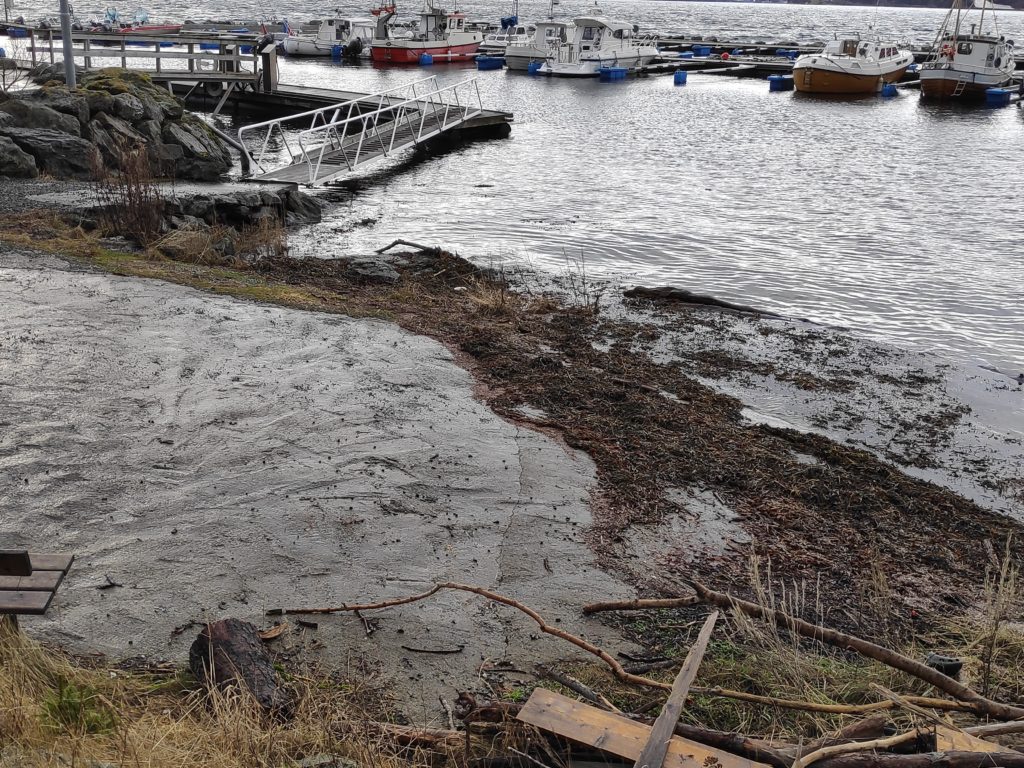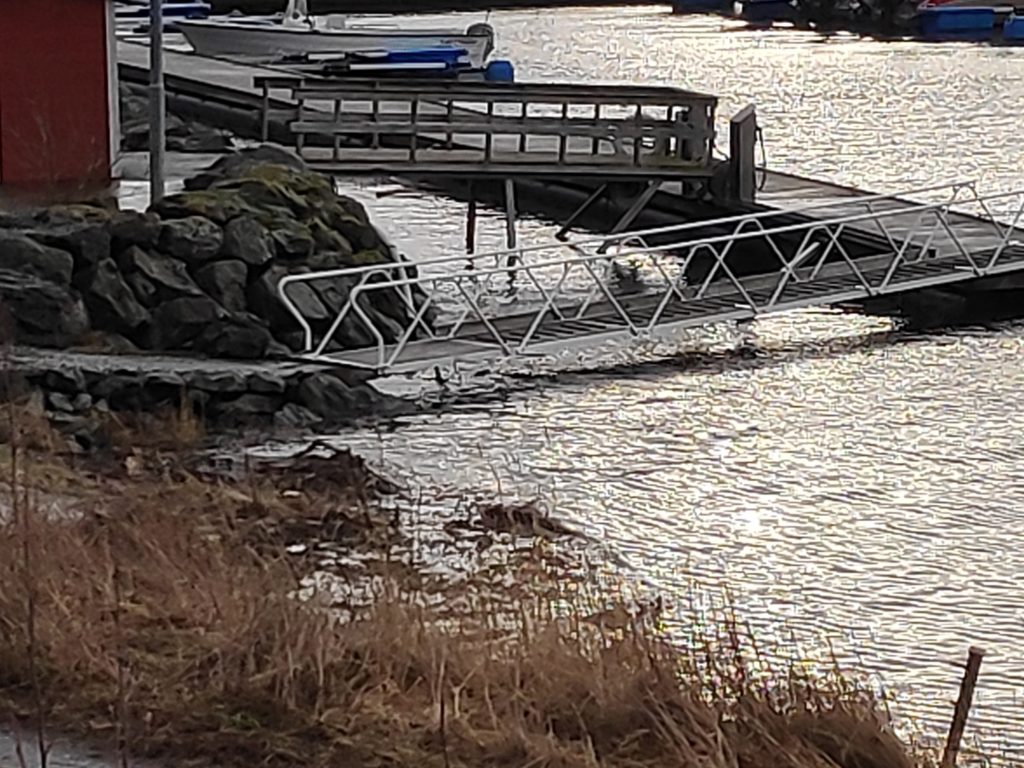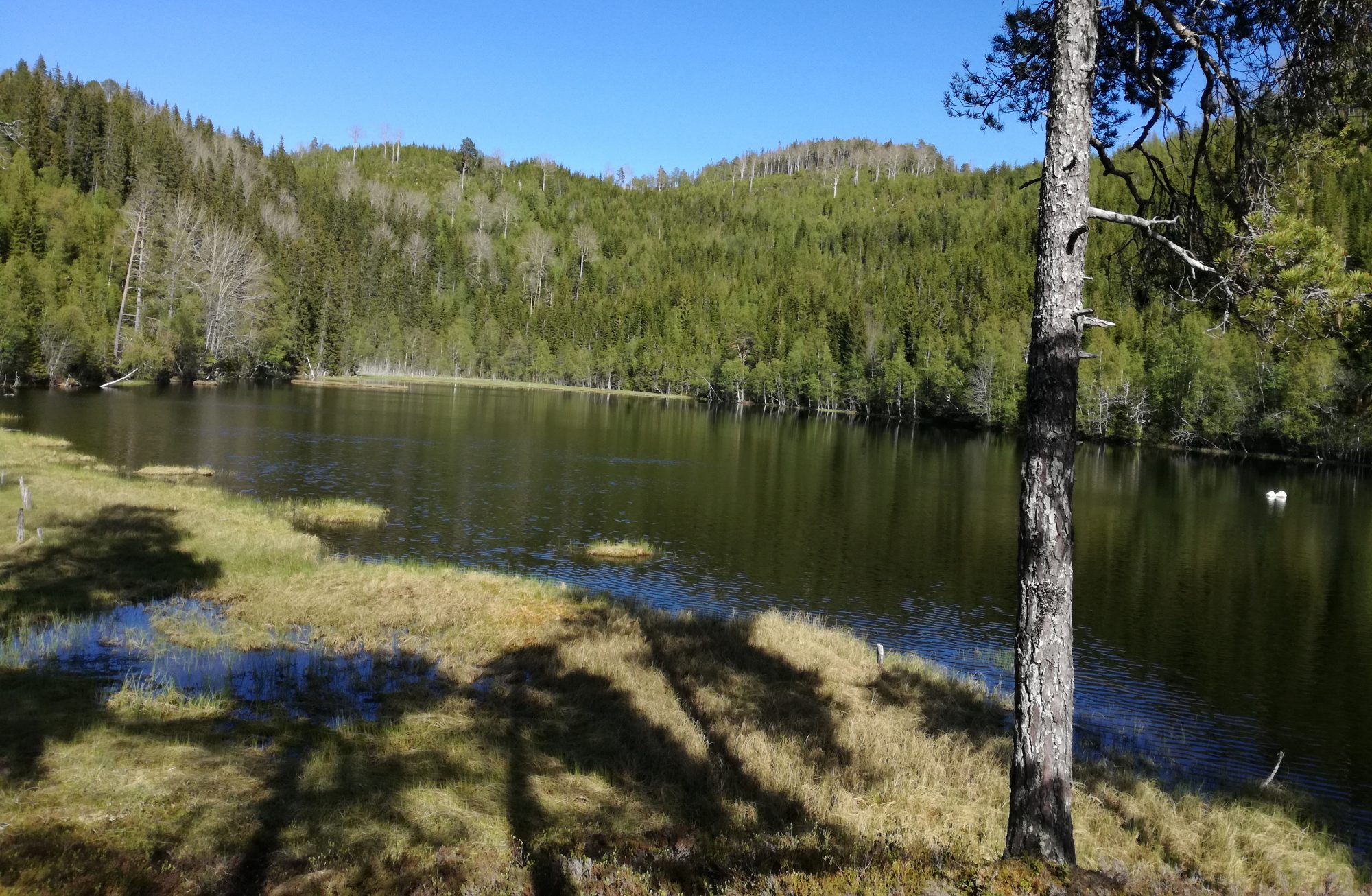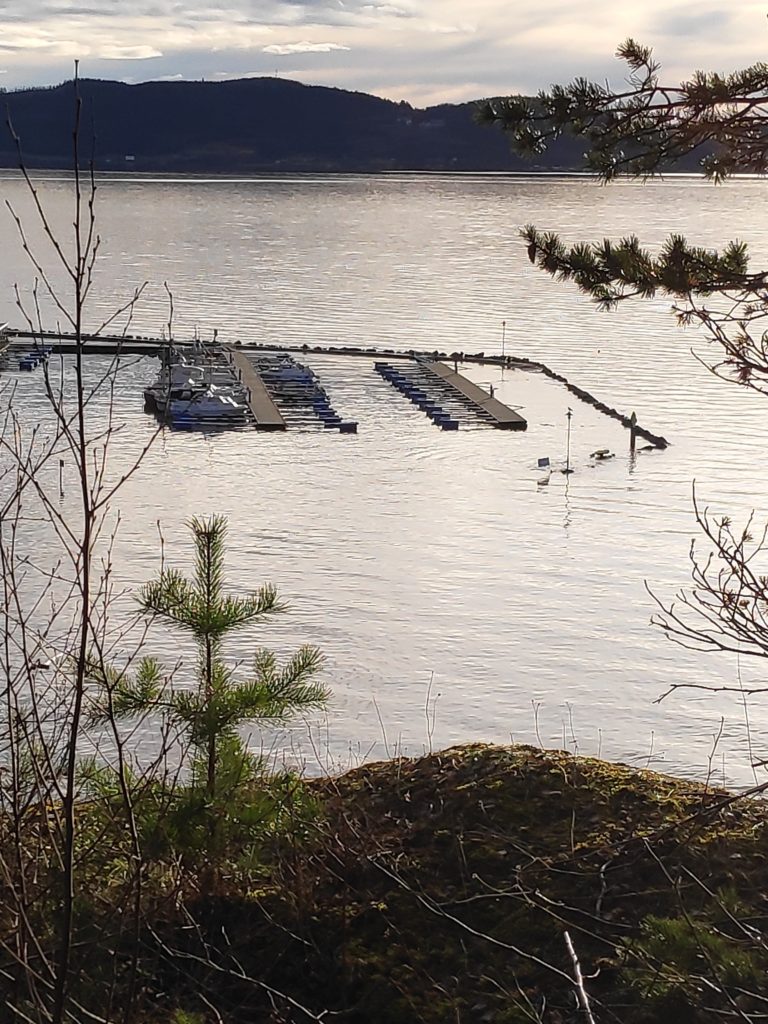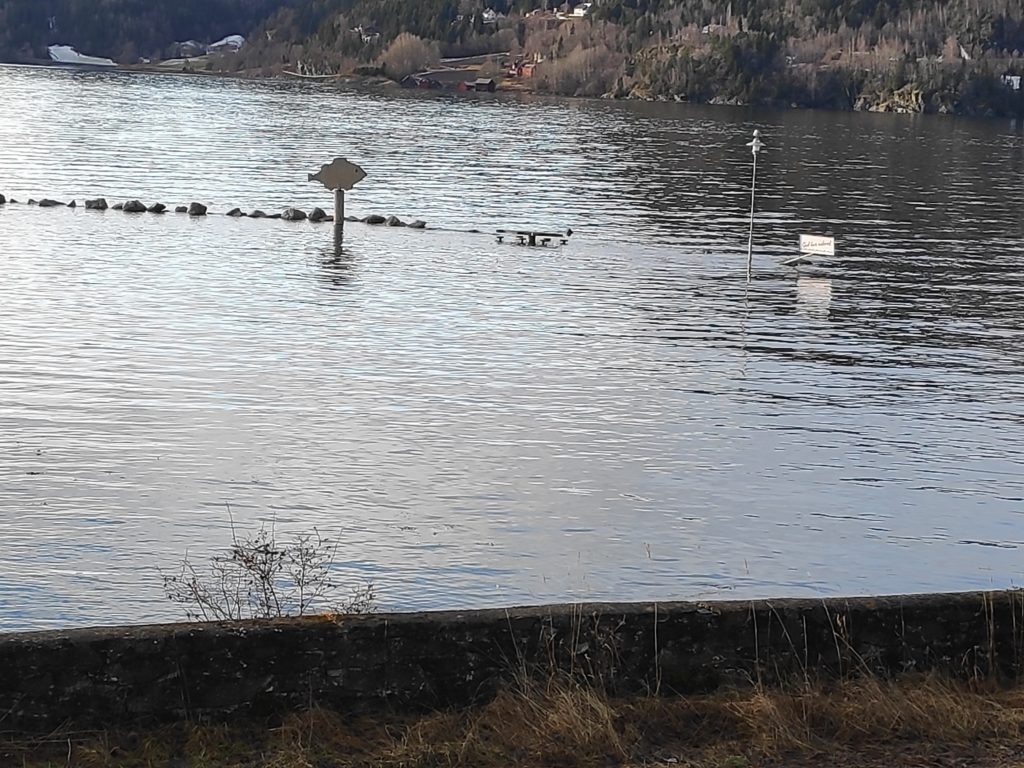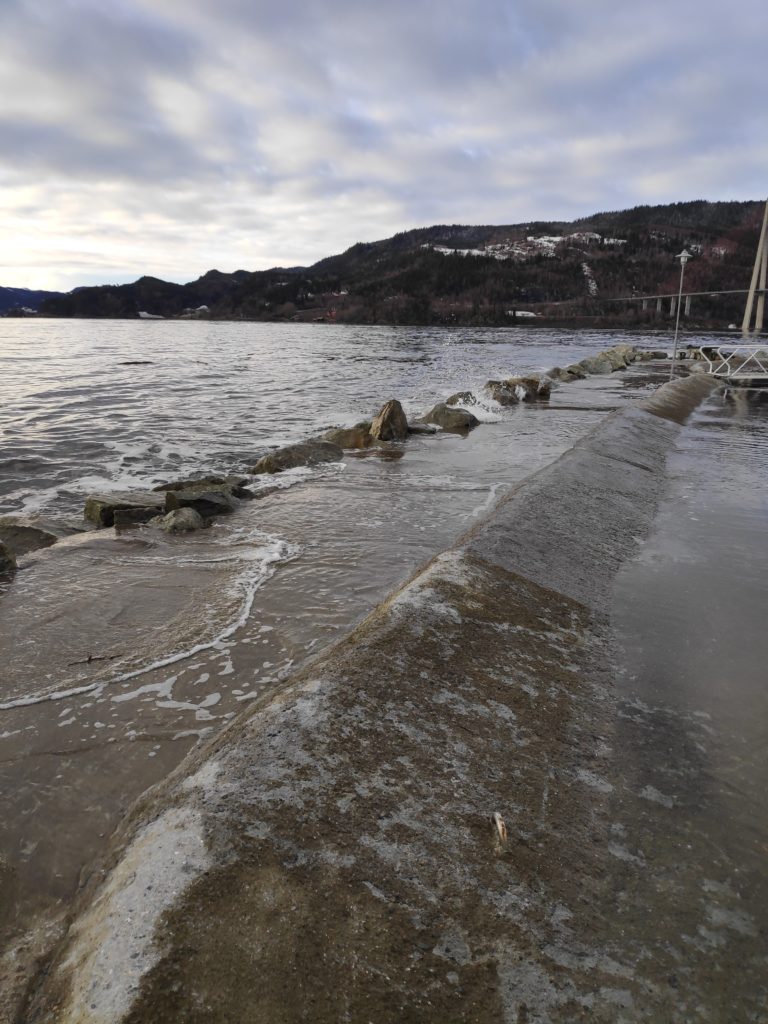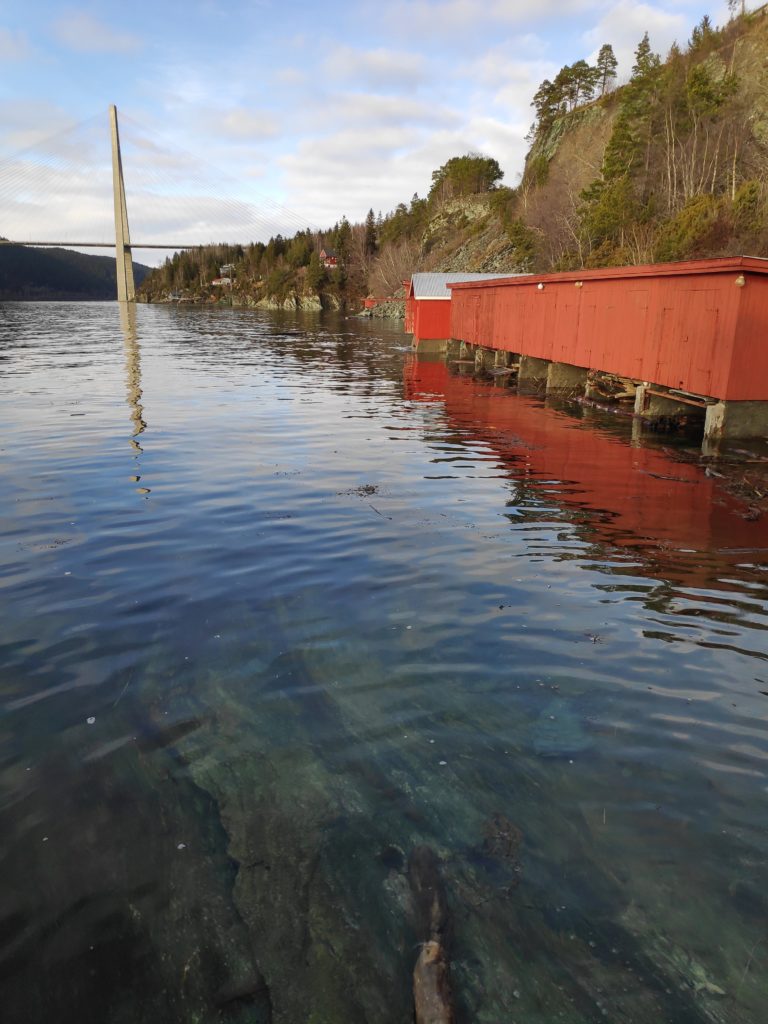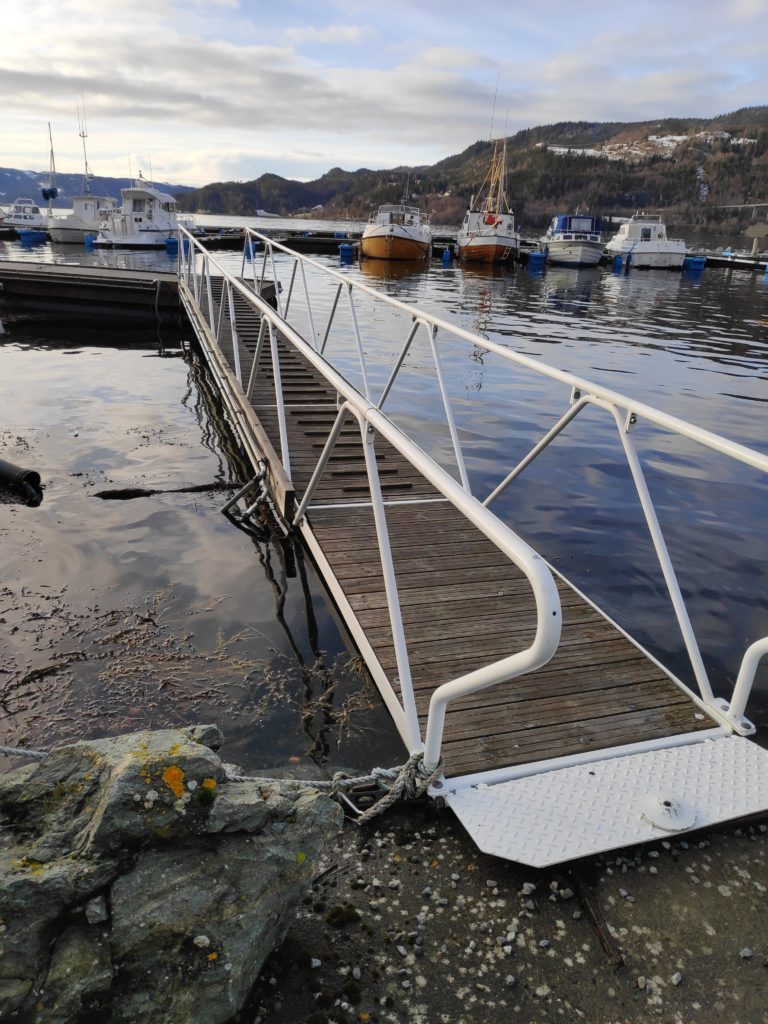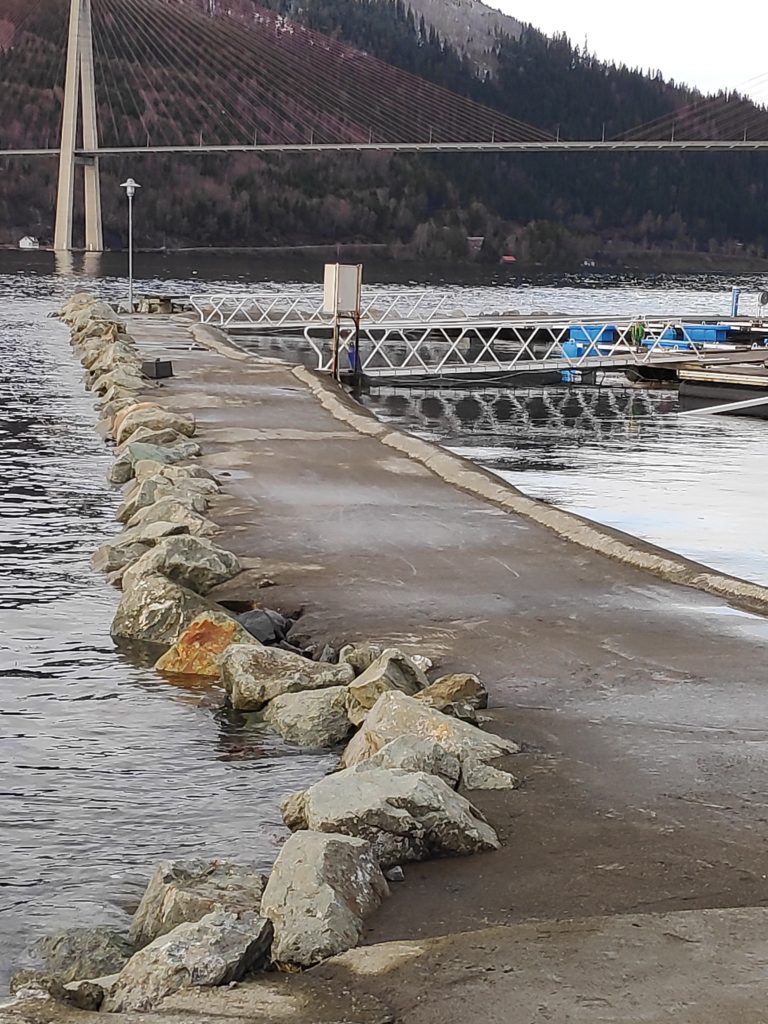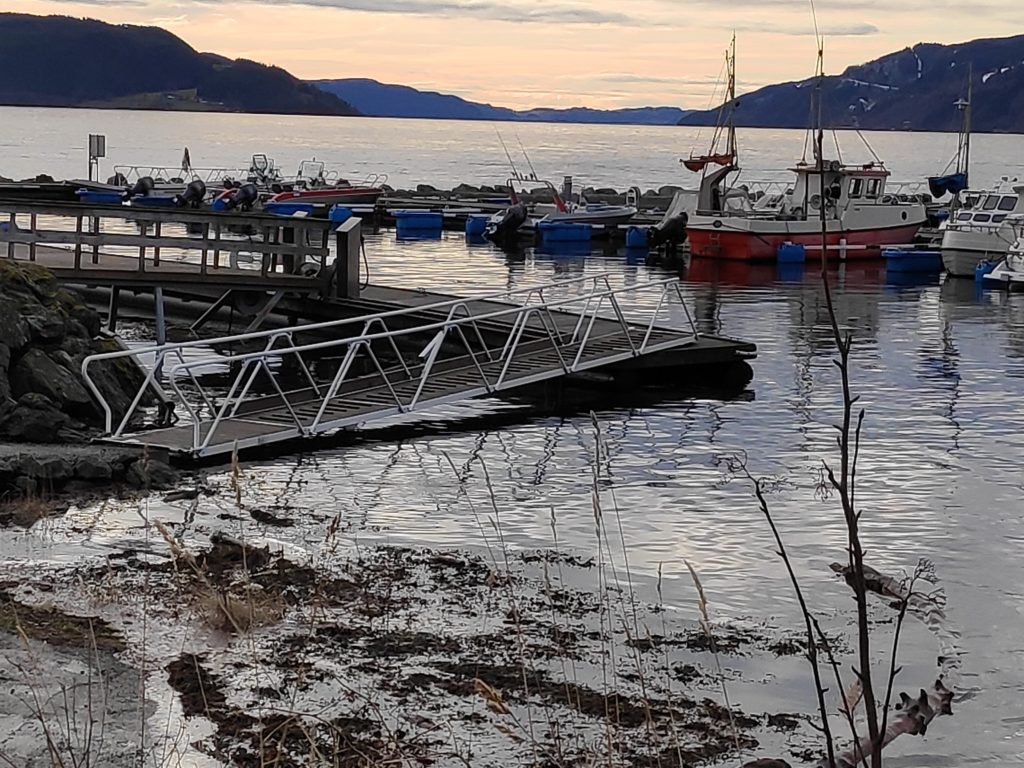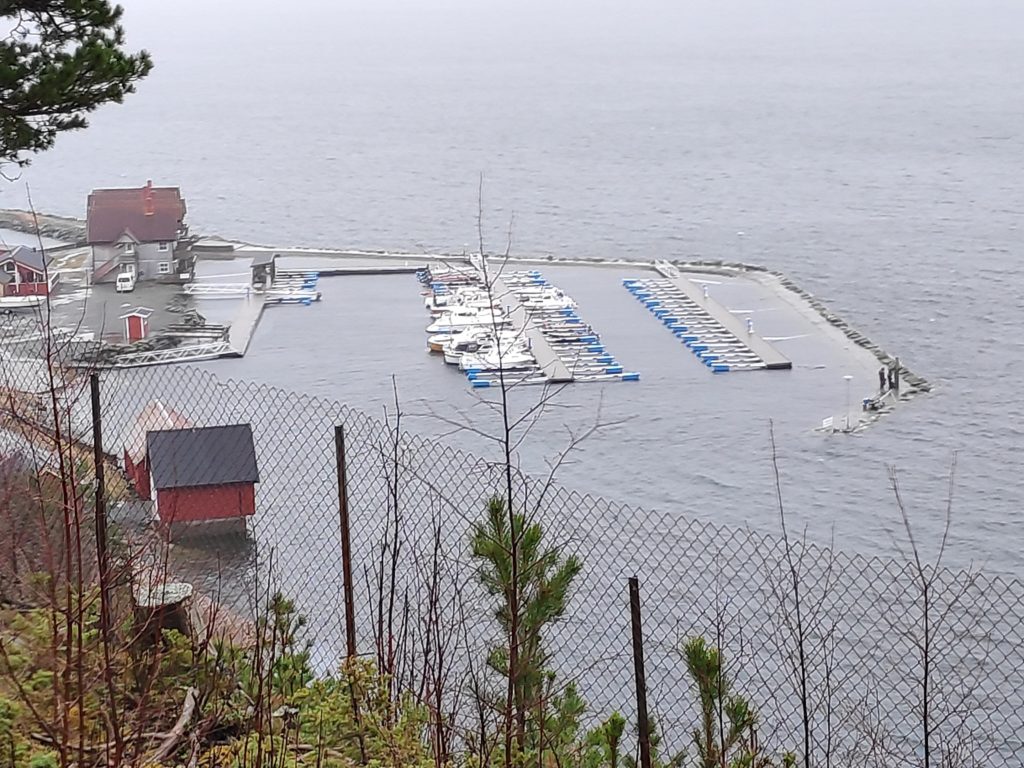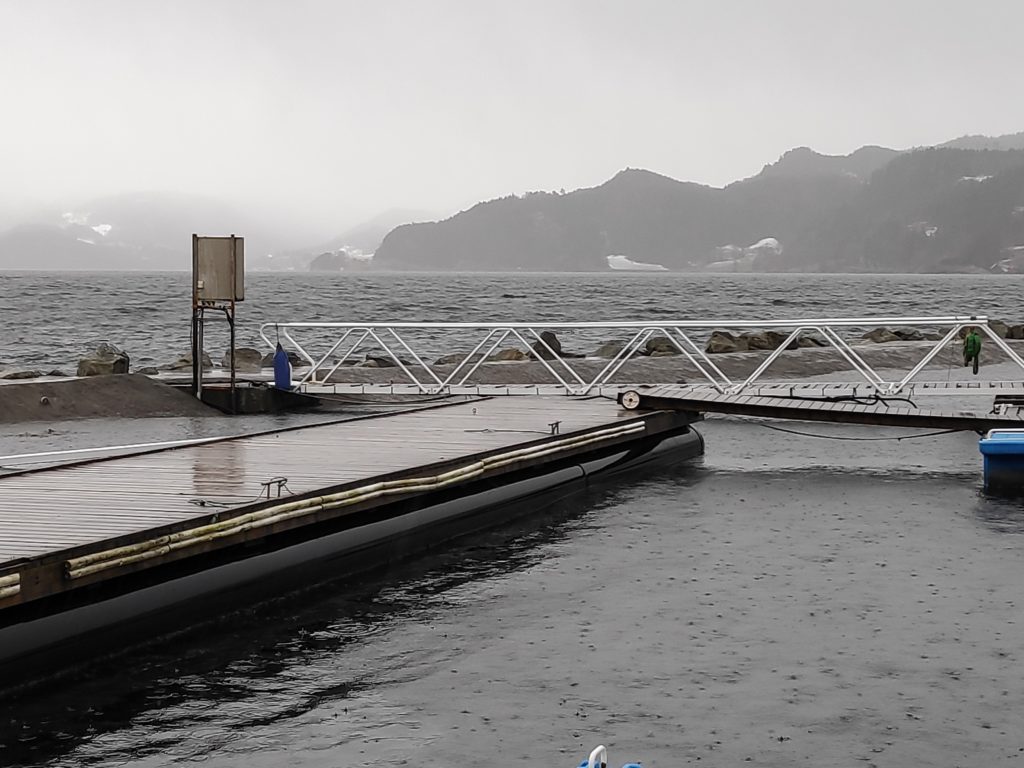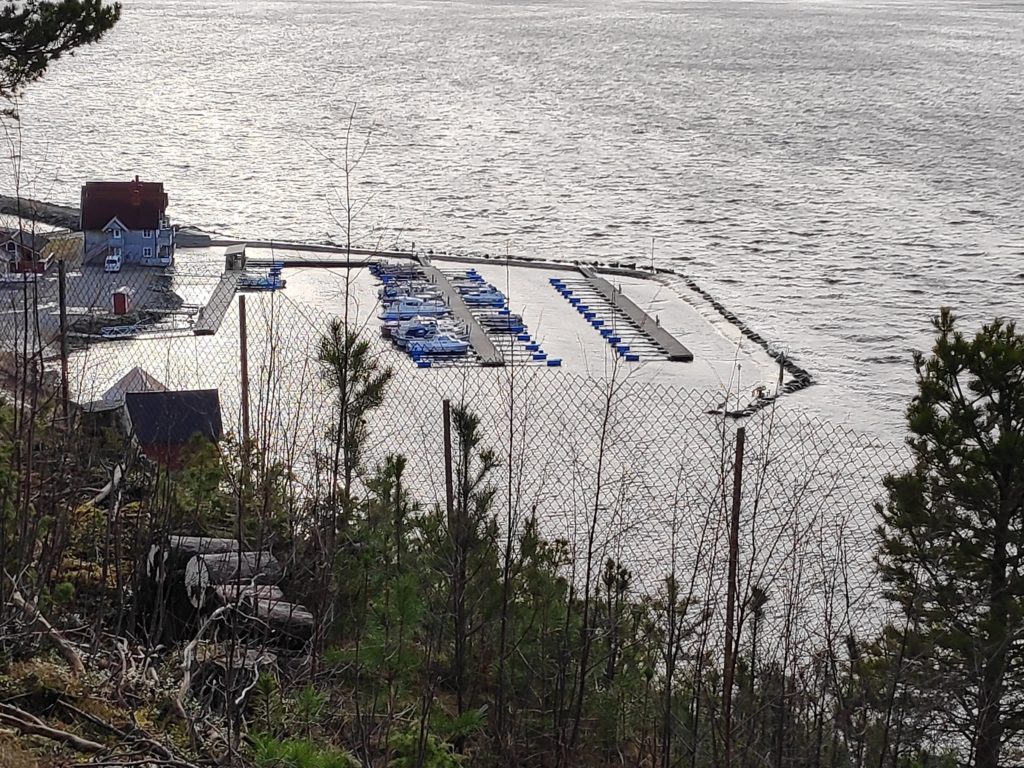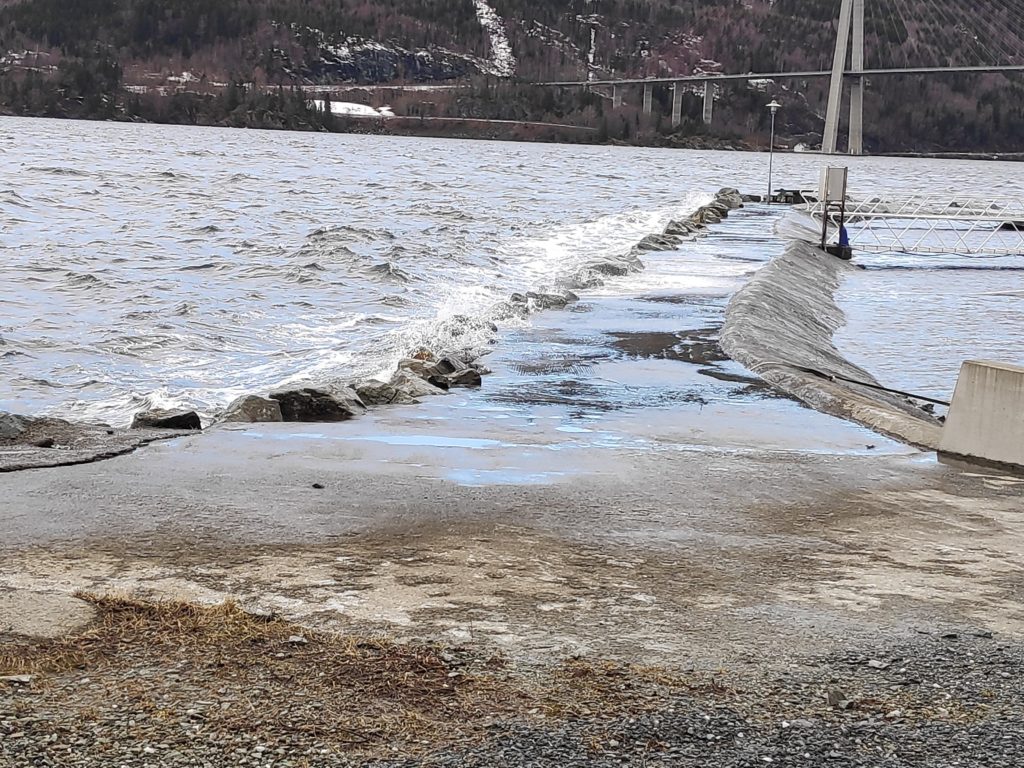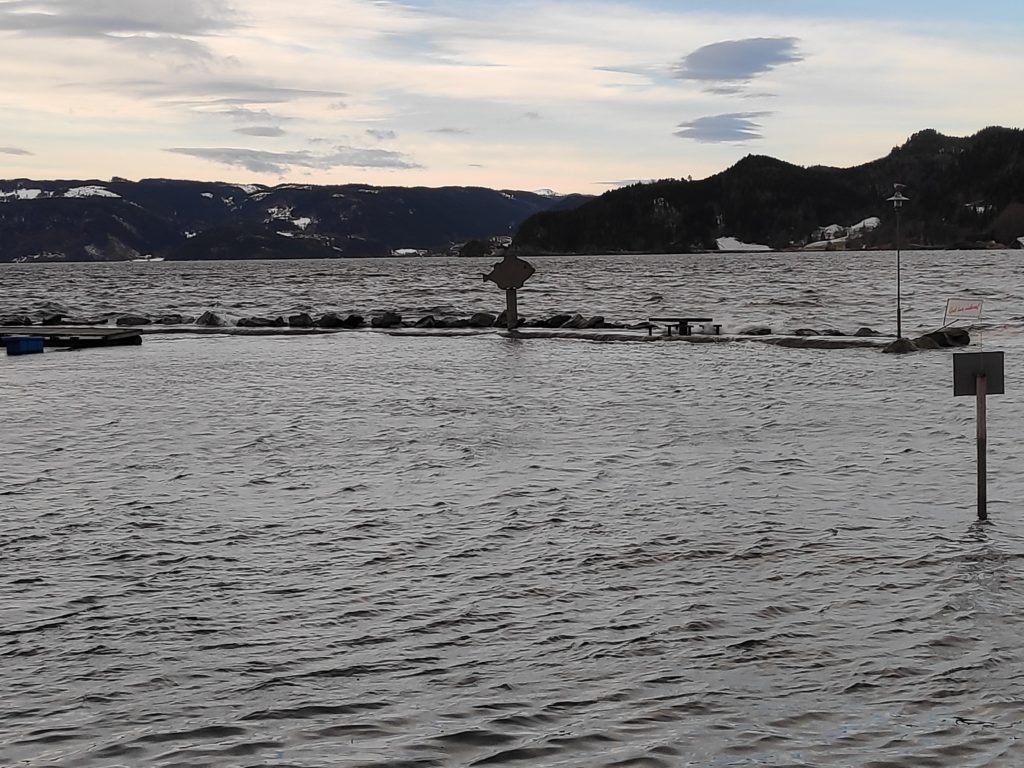Today there was still a very high tide in the afternoon at Vangshylla. It was about 20 cm lower today than yesterday, though still about 40 cm above the calculated high water in the tide tables. Today was a bit windier than yesterday so there was some wave action on the breakwater.
One thing that I find interesting is how accurately they were able to calculate the additional affects of the weather on the high and low tide levels. Even the low tides have been higher than normal.
It is normal that the height of tides varies from day to day, with a monthly swing based on the moon phases. The highest and lowest tides will be when there is either a full moon or a new moon. Where we live there will normally be two high tides and two low tides every day, and the times move about 45 minutes later each day. So yesterday, high tide was at 13:09 and today it was at 13:53. In three days time, the difference between high tide and low tide will only be 2 meters, instead of the 3.5 meters the last few days. This is part of the regular cycle.
